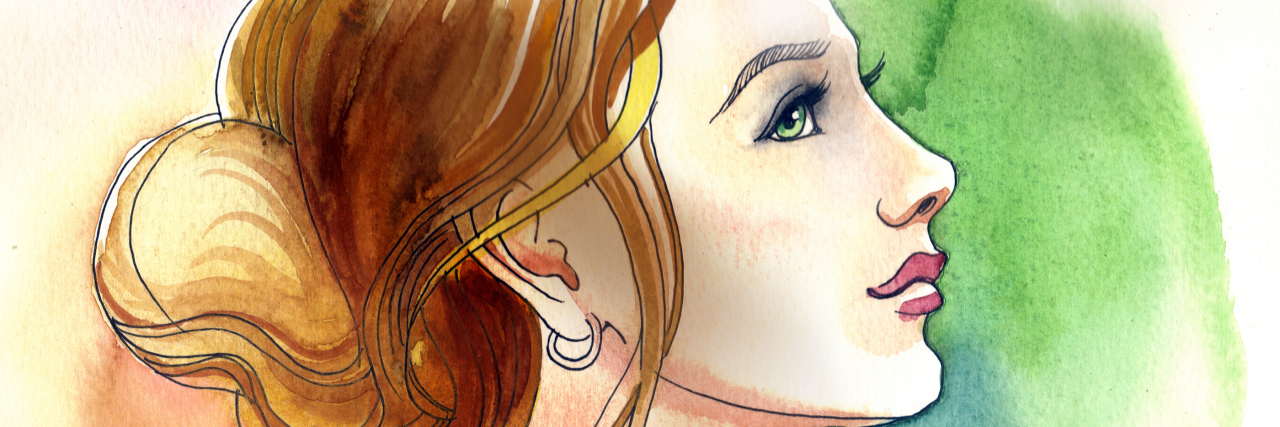A few months ago, our Catholic Women’s Group had a night that focused on inner beauty. One of the nicest things we did that night was to affirm each other for the unique qualities that made us beautiful. All our photos were hung up around the room, and we went around and anonymously wrote what we admire about each person. When I saw my own page at the end of the night, my mouth dropped… I was so touched to read all the lovely compliments! The most popular to describe yours truly? “You are so strong.” To be perfectly honest, strong isn’t a word I’d put at the top of the list to describe myself, so reading these were very humbling. The activity made me ponder the question, “How did I get here?”
The last five years of my life have been a whirlwind of self-acceptance and a constant search for the right perspective as cerebral palsy accompanies me into my adult life. At 17, I was telling a very different story than I am today. As a teenager, I had a deep sense of yearning to know what it felt like to live in a body that was not affected by CP. I was constantly grappling with the thoughts of what my life could be like if I didn’t limp or have frequent muscle pain. The fact that cerebral palsy would be forever felt incredibly daunting to my young mind. Frustration with my physicality consumed me, and the pressures of high school only made things more difficult. I didn’t want all of this… limping, being called “the gimp,” the tightness, the falling. Emotionally, I was incredibly fragile. CP became my own personal black hole, and slowly I was being sucked deeper and deeper into it.
I can clearly remember the night when I realized I needed to find the strength to carry on. At the time, I wasn’t one to pray frequently, but I had a very special and life-changing conversation with God that night. The revelation came suddenly; I don’t quite have the words to explain it. But I do remember feeling an overwhelming sense of, “God loves me. He gave me CP for a reason that is bigger than myself, and how I’m living now is not the way I’m meant to live my life.”
It hit me that each of us gets a limited amount of time on this earth, and for me to be able to live my life to the fullest, I owed it to myself to embrace my CP for all that it is. CP touches my identity in a deep way, and I came to understand that the most valuable way to live and accept CP could not be accomplished through frustration and hopelessness, but rather gentleness and ability to see the positive.
Of course, this change in perspective did not happen overnight. But at first, the “fake it till you make it” method actually worked. I jumped into my new outlook with both feet and wouldn’t allow myself to acknowledge the negative. Anytime I was feeling down, I quickly found myself scrolling through Pinterest for a relatable quote I could add it to my arsenal of optimism. There were post-its with these quotes stuck all over my desk and posted on my social media pages. The power of words helped me begin to think differently about my life, as I was able to apply little bits of wisdom into the bigger context of having CP.
On the surface, surrounding myself with positive energy certainly helped. But the intention to live my best life has gone much deeper and has matured over the years. Me being “OK” with the idea of having this medical condition forever has taken the help of professionals, mentors, and loving family and friends. At 22, I am now faced with the realities of post impairment syndrome, which basically means that although the initial brain injury that caused my CP won’t become worse, spasticity is catching up with my body as I age. As one can imagine, this makes living with CP and chronic pain more difficult.
This has particularly brought my awareness to the relationship between how my mental and physical health are interconnected. When in pain, the body has a tendency to become more anxious, and when anxious, an individual becomes more aware of physical pain. There are days when my pain is at a level where I’d just rather pack my leg in ice and curl up with a blanket. But I often don’t have that luxury. I can’t always control my pain level, so I’ll usually look towards putting my energy into something I can control. Focusing on school and having good conversations with people definitely help. And for the record, I’ve never been denied a hug from a friend when I’ve asked for one. Hugs are amazing painkillers!
People continue to ask me, “How do you stay so positive?” At the end of the day, living a positive life with a chronic condition is all about balance. Being aware of my emotional energy and how I want to spend it each day is incredibly important. Allowing myself to acknowledge and feel the emotions on the hard days is actually constructive — it helps me accept, recharge, and continue on. Finding joy in the small things, taking time to laugh, drawing strength from my faith, and remembering to be grateful are all crucial for me. And when a day is particularly draining and I go to bed not feeling like I handled the ups and downs in the best way, that’s when it’s important to forgive myself and try again tomorrow. When the time comes, my goal is to be able to look back with a smile and say that with CP and all, I did my best.
We want to hear your story. Become a Mighty contributor here.
Thinkstock photo by Berdsigns.

